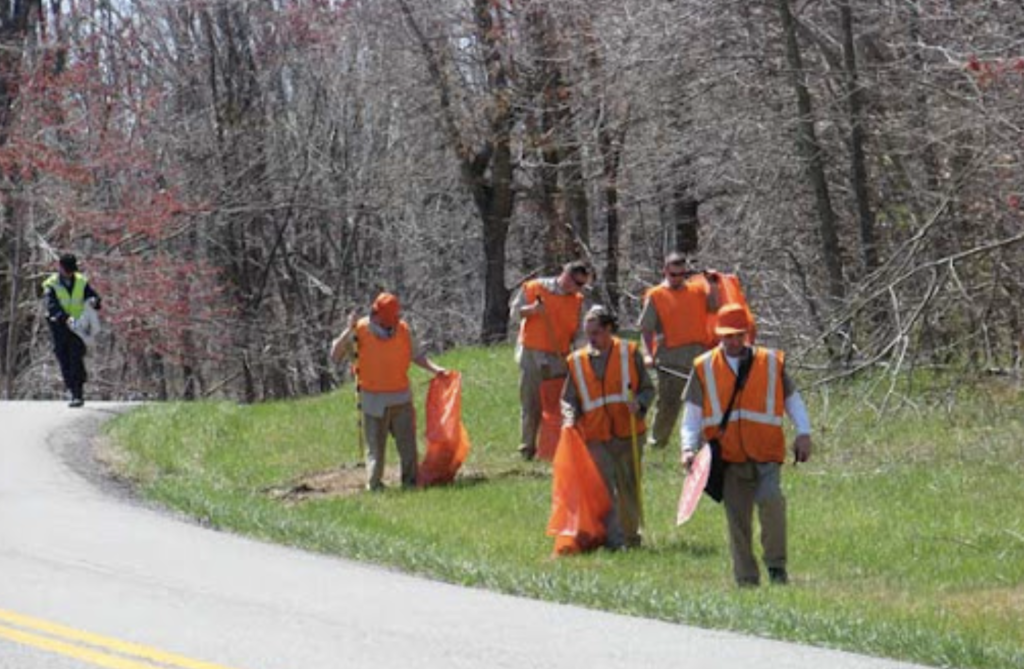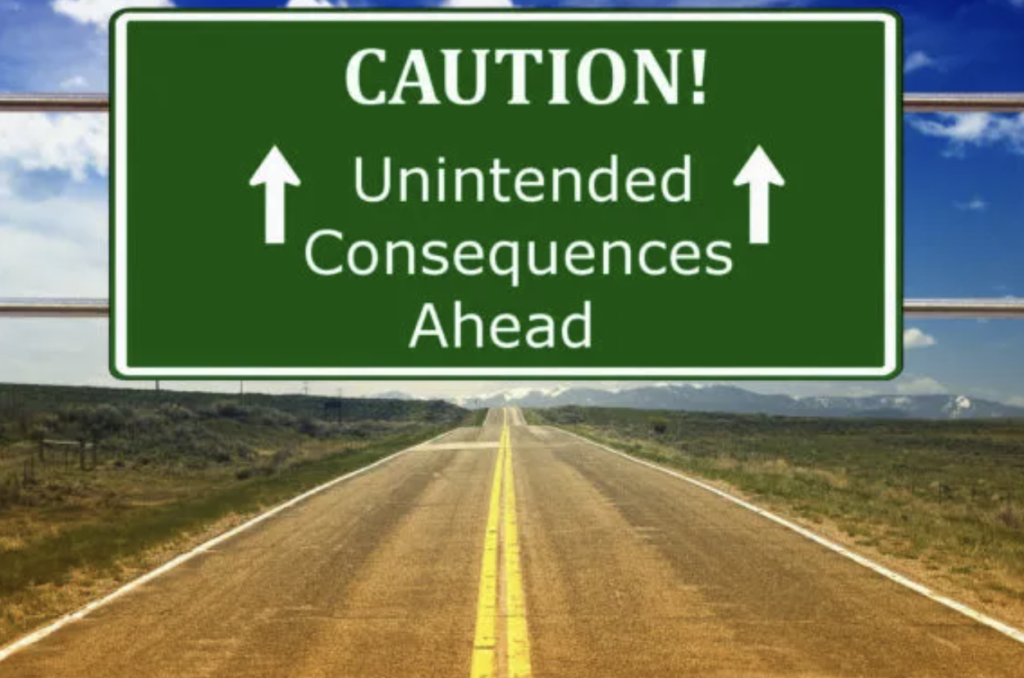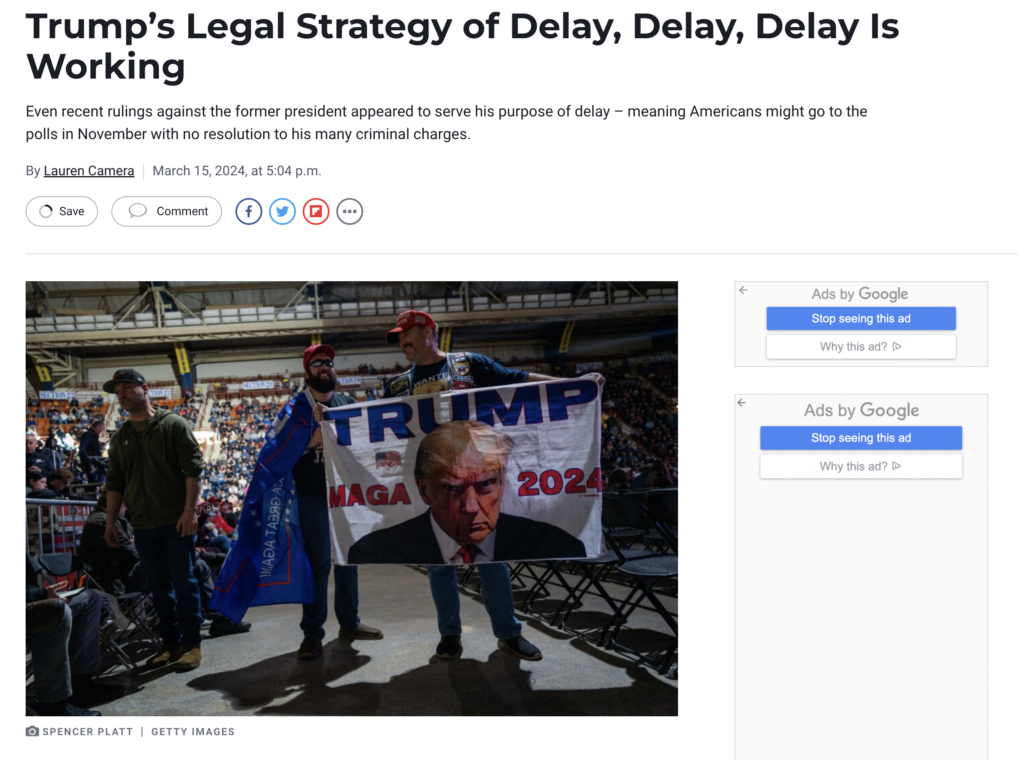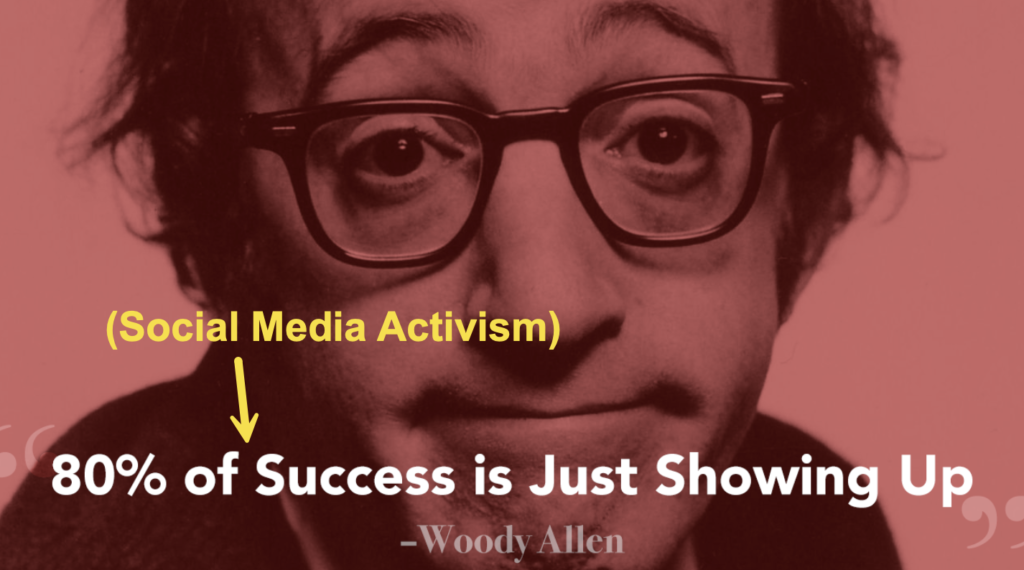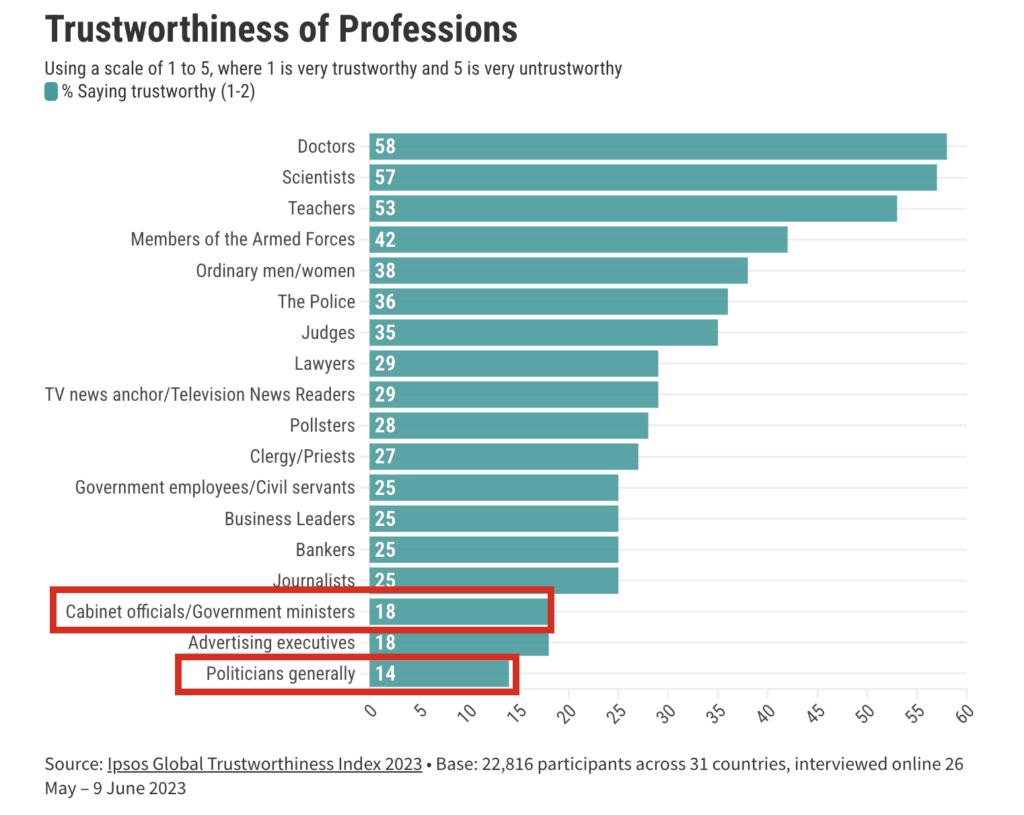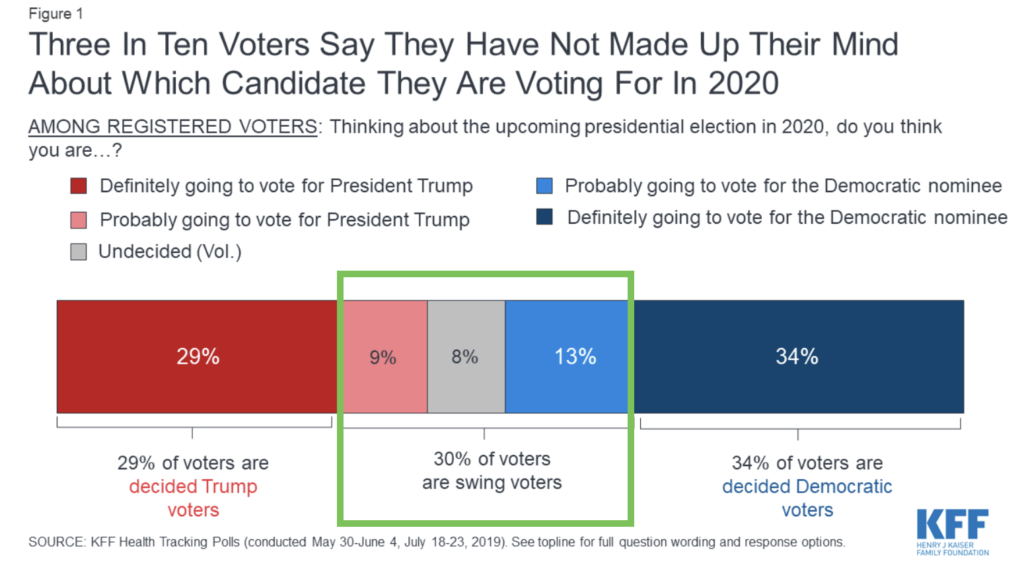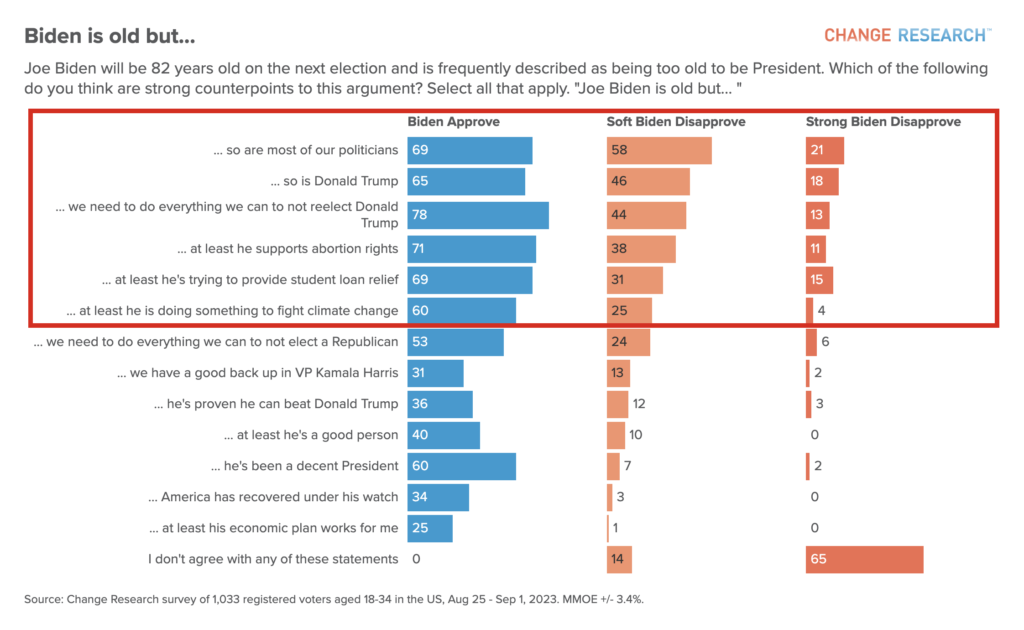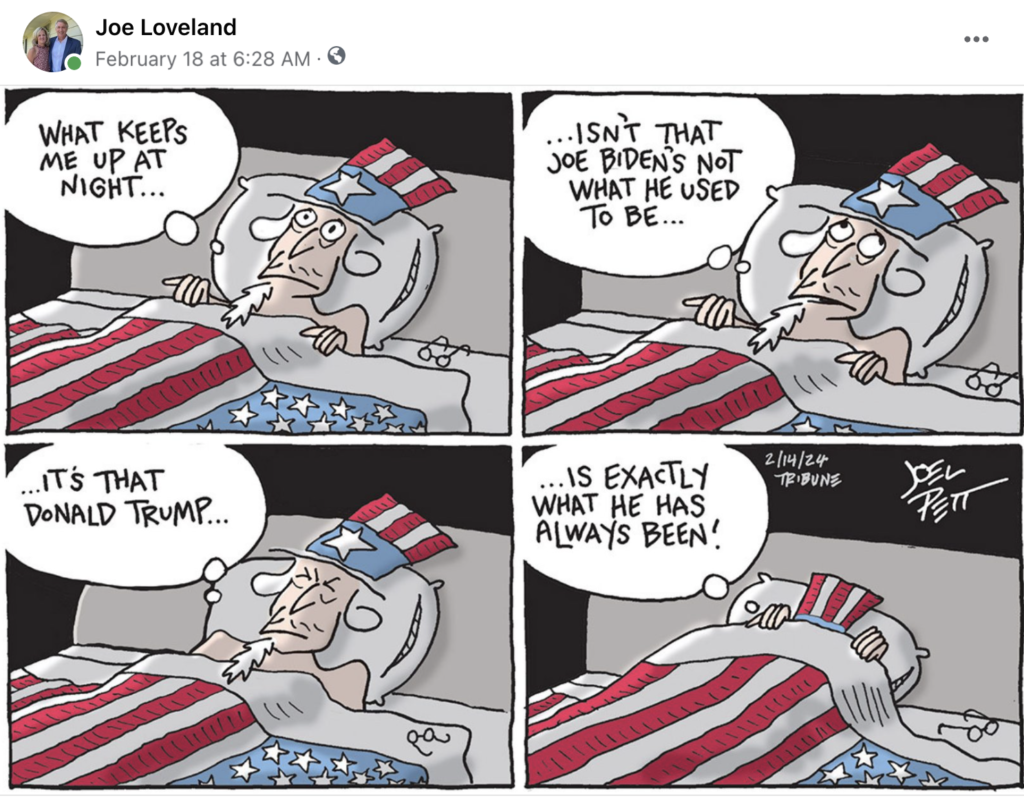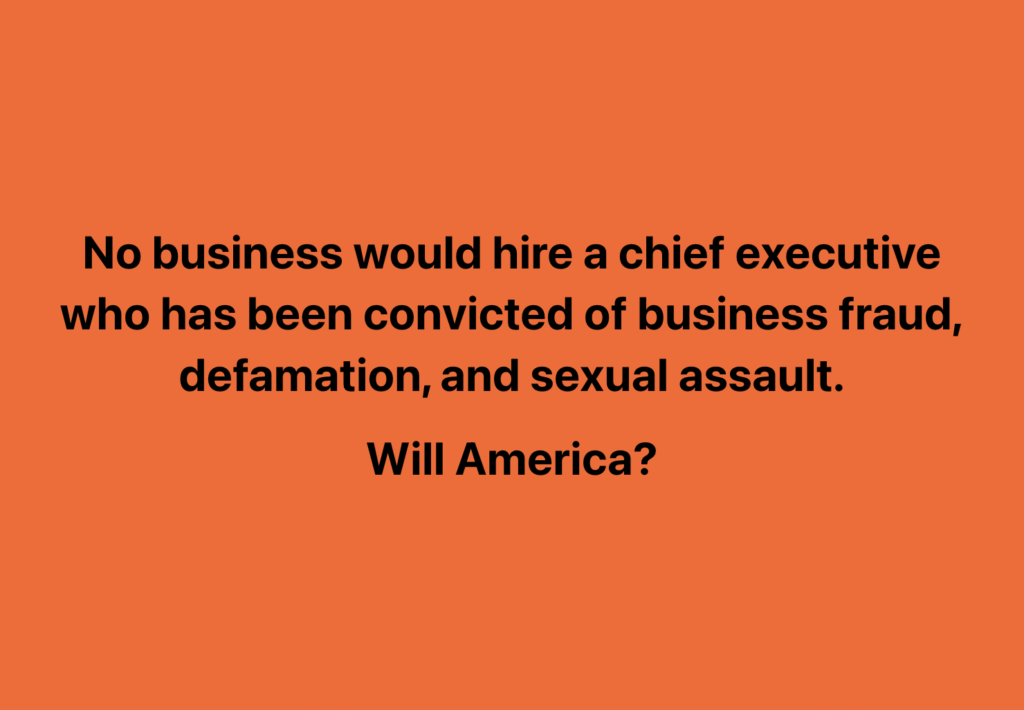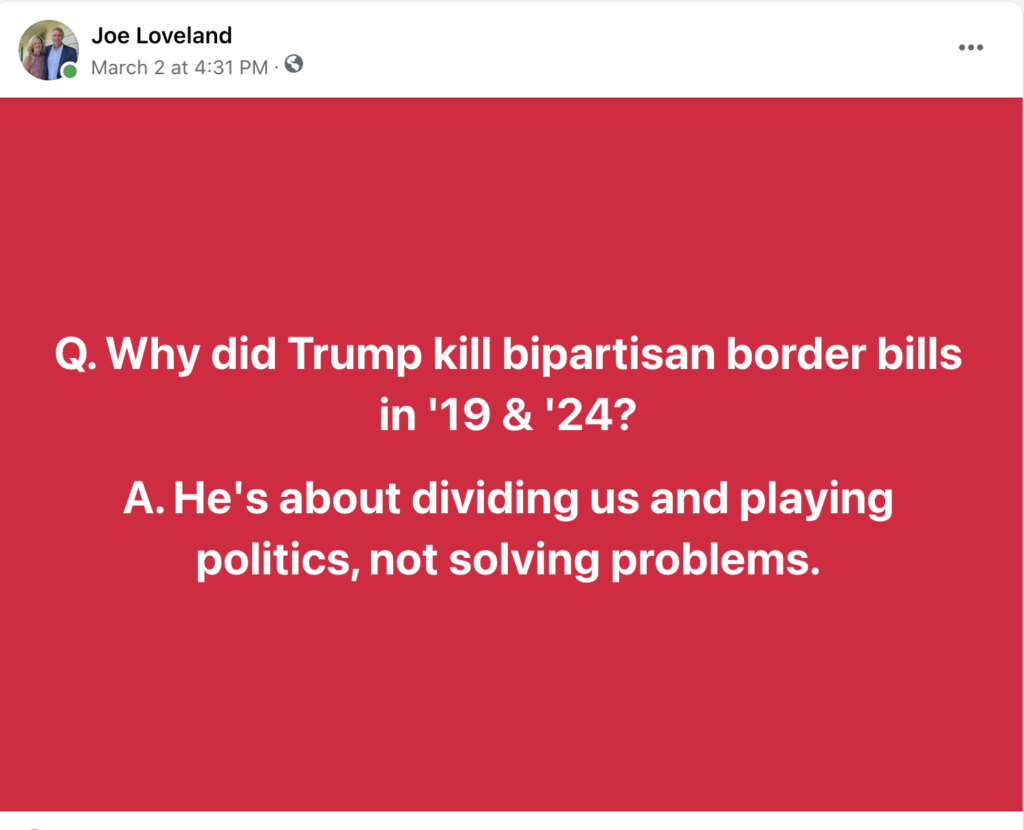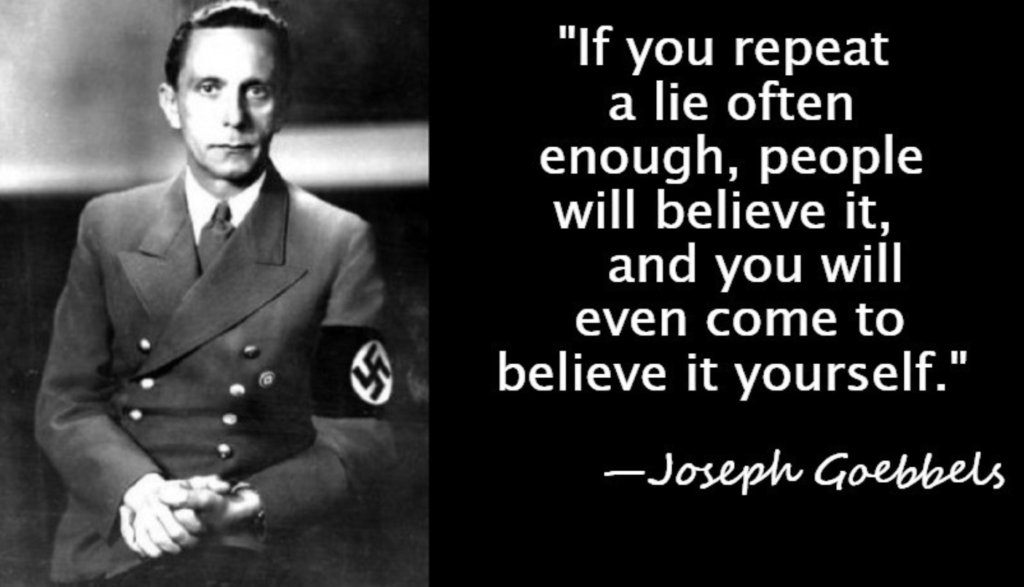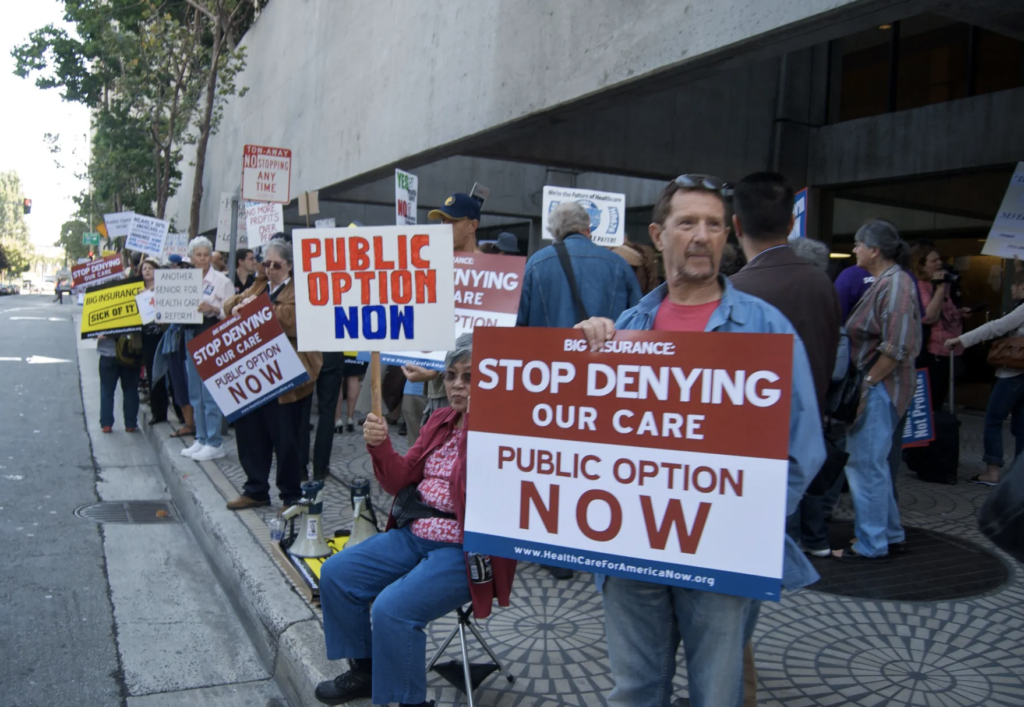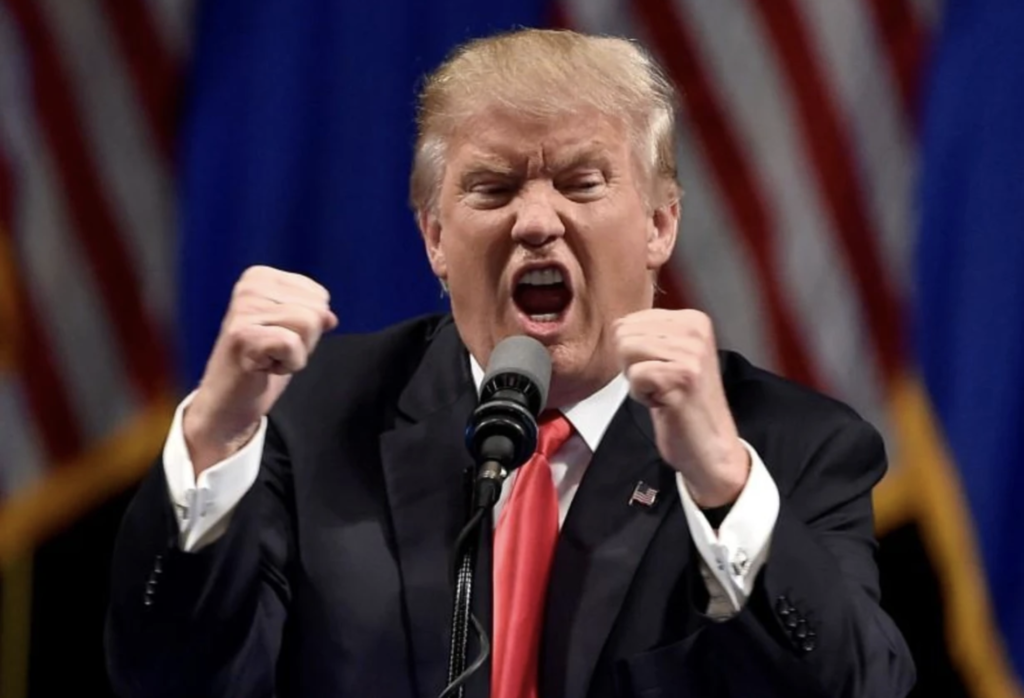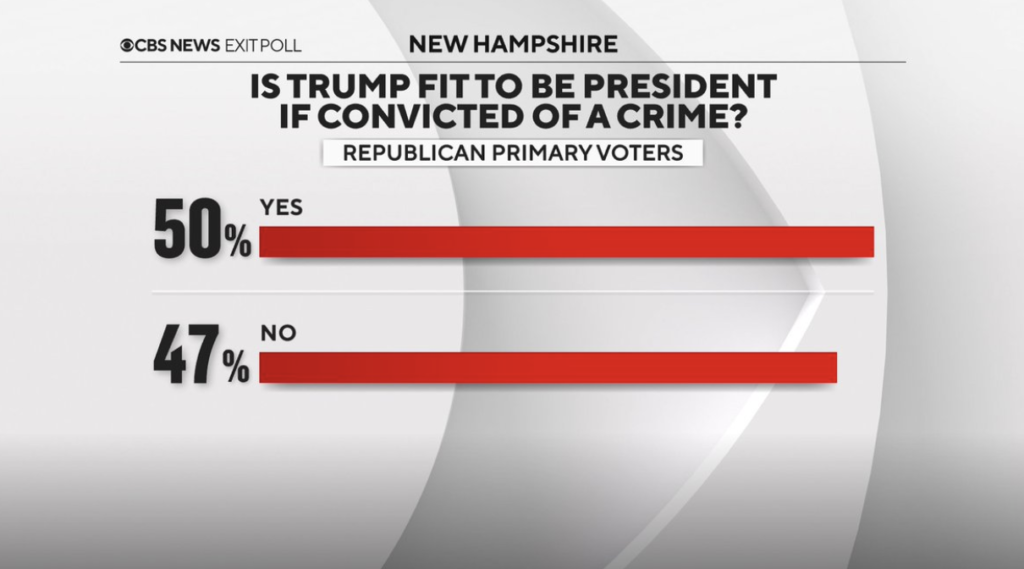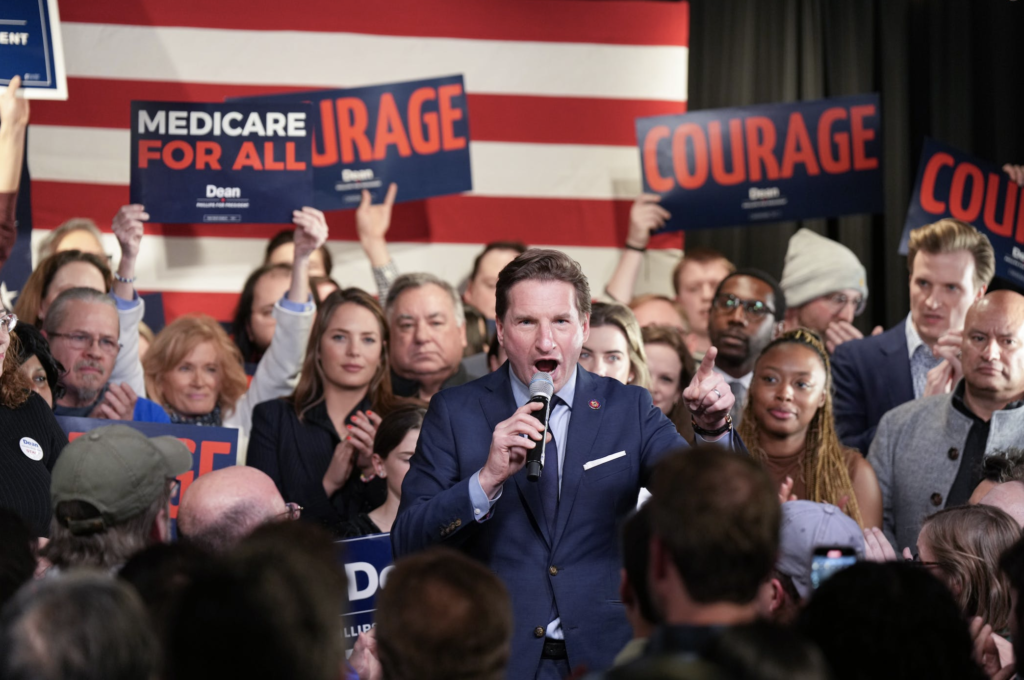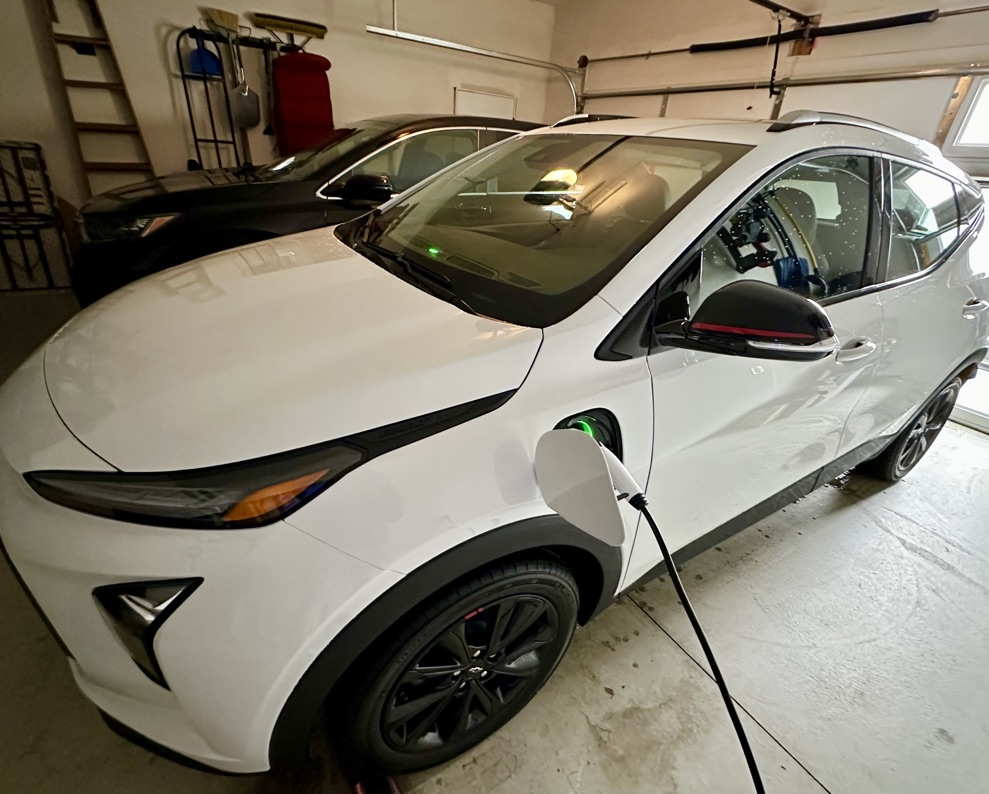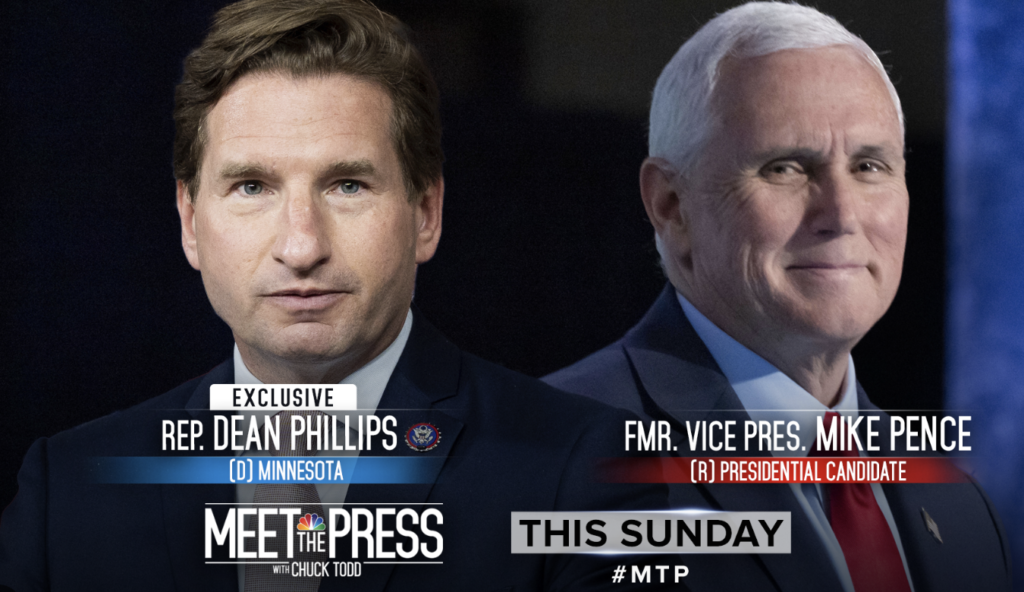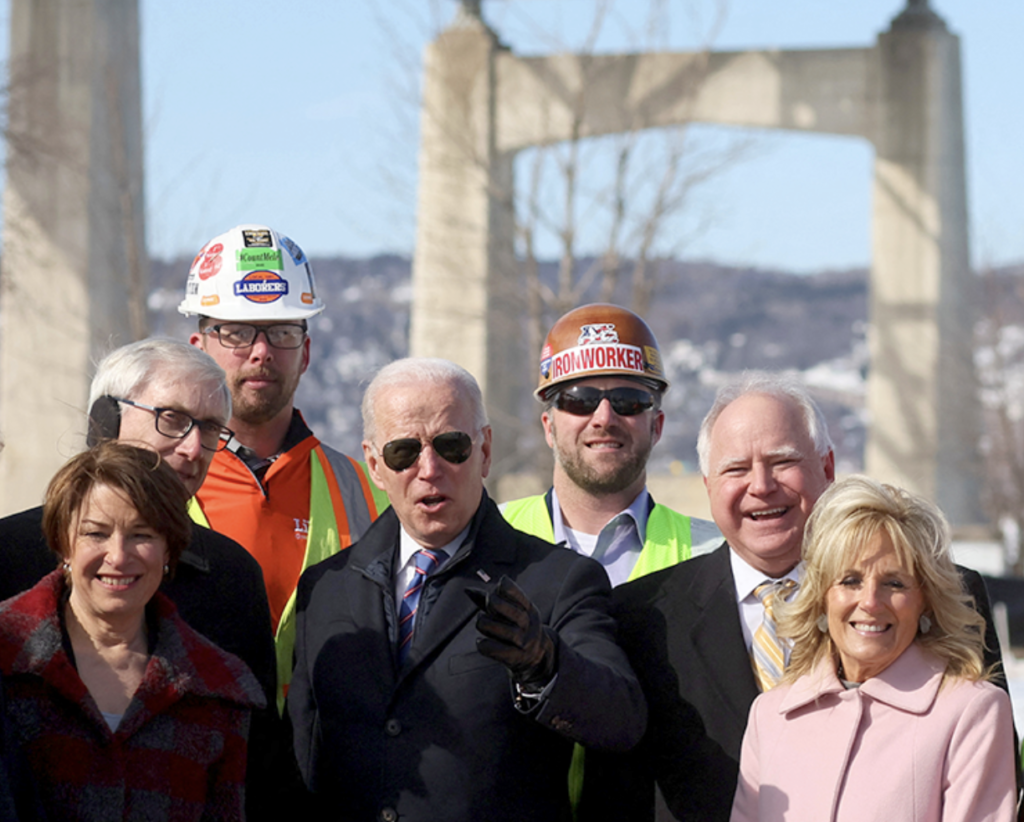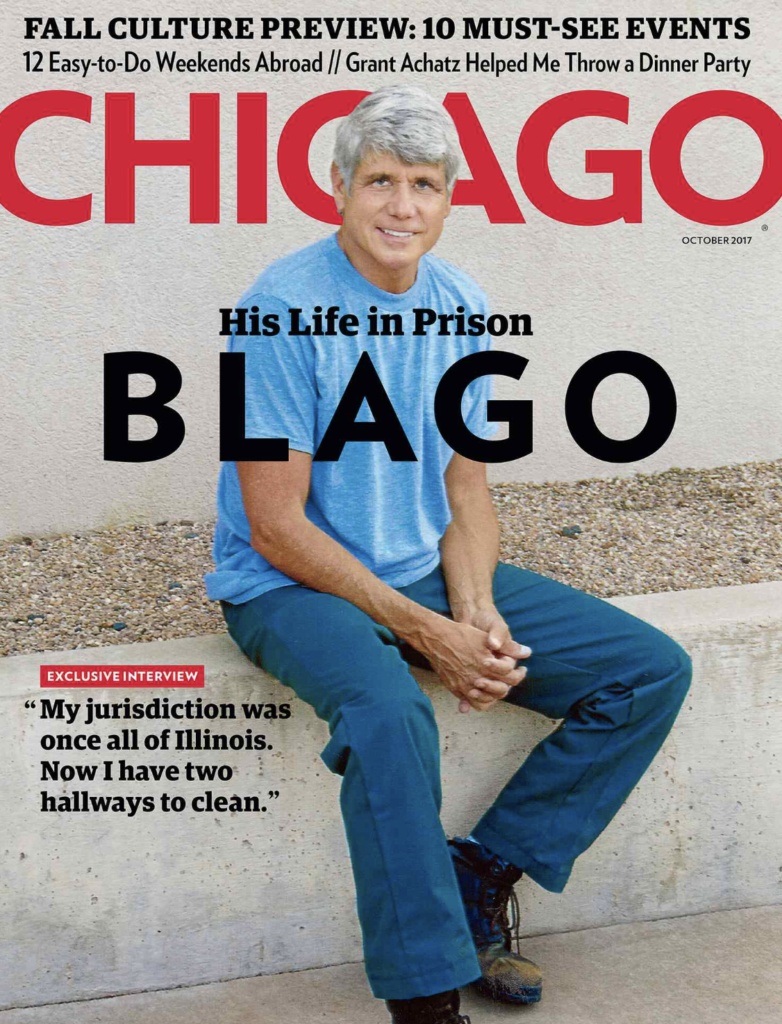There are many reasons why Trump defeated Harris, and I’m not attempting to capture all of them here. I did want to spotlight a few key instances where the news media performance was frustrating. This also isn’t an exhaustive list. It is focused on what polling found were the most important issues to voters — prices, the economy, and border crossings causing crime.
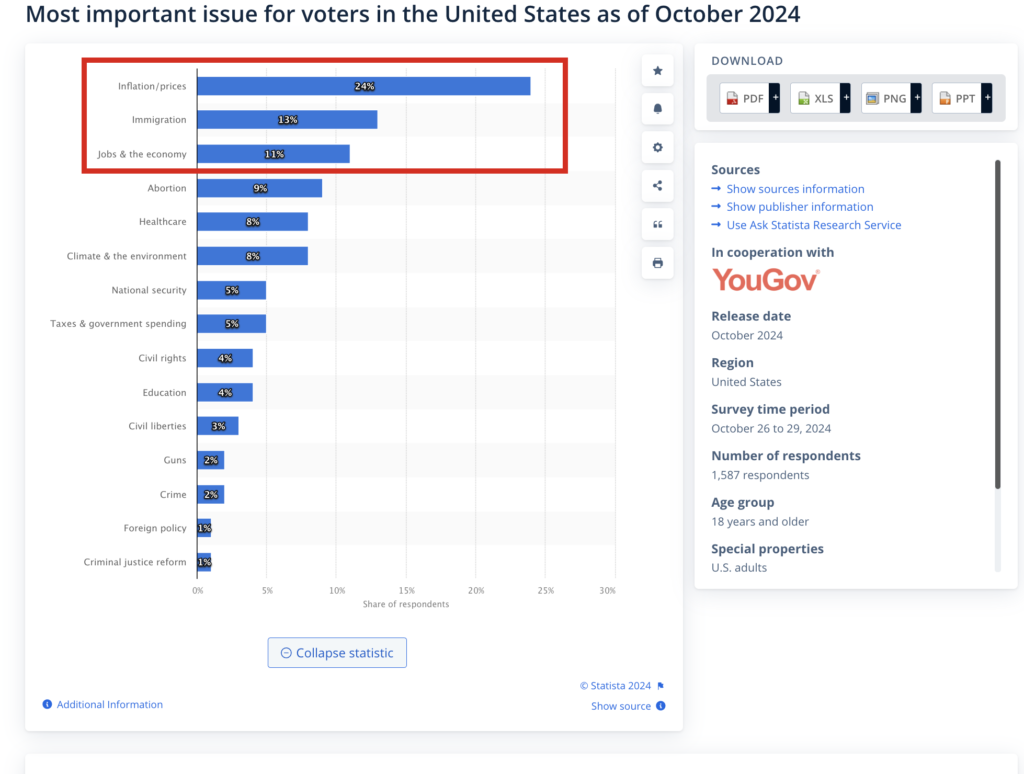
First, let me give credit where credit is due. The news media was at its best over the last four years in consistently pointing out that Trump was lying every time he claimed he won the 2020 election. That was impressive and badly needed. As the old journalism adage goes, “If someone says it’s raining and another person says it is dry, it is NOT your job to quote them both. It’s your job to look out of the window and report which is the true.”
I would add that journalists need to consistently report the truth every time the lie is restated. Doing it once or rarely doesn’t serve viewers, listeners, and readers well.
During the 2024 campaign on prices, the economy, and migrant crime, journalists didn’t come close to performing as well as they have with The Big Lie.
TRUMP’S MIGRANT CRIME ALLEGATIONS. One of Trump’s most effective and frequent attacks was on “migrant crime.”
The first problem with that assertion is that undocumented people commit crimes at a significantly lower rate than the rest of the population, not a higher rate. That well-documented fact was reported a little, but not a lot. Therefore, few voters were aware of that important truth.
In addition, after a relatively brief crime spike during the Trump administration, rather than during the Biden Administration, there has been a historic reduction in violent crime during the Biden administration. Again, few voters are aware of that.
Finally, this is the one that bothers me the most. Trump also released many more migrant criminals than Biden, because Trump specifically set a policy to do so. This was documented by the conservative analysts at the CATO Institute. I only saw the CATO findings reported twice, once in a commentary and once by the relatively lightly read Newsweek:
More illegal immigrants charged with or convicted of a crime were released during Donald Trump‘s administration than during President Joe Biden‘s term, according to an analysis published Wednesday by an influential libertarian think tank.
The report from the Cato Institute found over 92,920 noncitizens with criminal records were released from custody between Oct. 2017 and Oct. 2020, including over 8,000 violent criminals and 300 murderers.
While Trump has insisted that the Biden-Harris administration has allowed more violent criminals into the country, a smaller number — 56,280 —were released between 2021 and June 2024, according to the report.
“One of his very first actions in office, the very first week that he was in office, he rescinded requirements for Immigration and Customs Enforcement to focus on convicted criminals,” David Bier, director of immigration studies at the Cato Institute, told Newsweek Wednesday.
“First felons and then other people who committed serious misdemeanors, he revoked those requirements that were put in place by the Obama administration,” Bier said. “So it was no longer a requirement for ICE to detain an arrest criminals over people who are just in the country illegally, who didn’t have any criminal convictions.”
Again, on one of Trump’s most frequent and devastating lines of attack, Trump had it completely backwards. It wasn’t Biden who had increased the number of criminals released; it was Trump. And that happened because Trump made an unforgivable policy blunder, which Biden subsequently fixed and therefore performed better on that measure.
Almost no voter knows this, in large part because the horserace implications of Trump’s allegations were stressed in news media coverage, rather than the accuracy of Trump’s allegations.
TRUMP’S WORST ECONOMY IN HISTORY ALLEGATION. Another of Trump’s most frequent and effective campaign attack lines was that the economy was the worst in history.
Not only was the current economy not the worst in history, it actually is currently the best in the developed world. That’s what the IMF, The Economist and Wall Street Journal are all saying, based on the actual economic data. Axios:
“The U.S. economy has defied predictions of a recession and is on track to continue its world-beating streak of robust growth, according to new forecasts from the International Monetary Fund.
The world faced a slew of shocks in recent years — pandemic, inflation, war and more. But one thing has stayed constant: The U.S. economy has come out in a better position than other large, rich nations.
The IMF’s World Economic Outlook, out Tuesday morning, projects that the United States will grow 2.8% this year… That is set to be the fastest growth among the G7 major economies, as was also the case in 2023.
Gourinchas attributed the U.S. outperformance to two major factors. First, there has been strong productivity growth, which is “somewhat unlike other advanced economies.”
Second is a rise in immigration. There’s been an “increase in foreign-born workers in the U.S. that have been integrated fairly quickly into the labor force,” he said, adding that “the labor market picture remains one that is fairly robust, even though it has cooled off … from very, very tight levels.”
To recap, not only was the U.S. economy the envy of the world, rather than the “worst in history,” that happened largely because of, wait for it, the thing that Trump demonizes the most – a spike in immigration! Isn’t that rich?
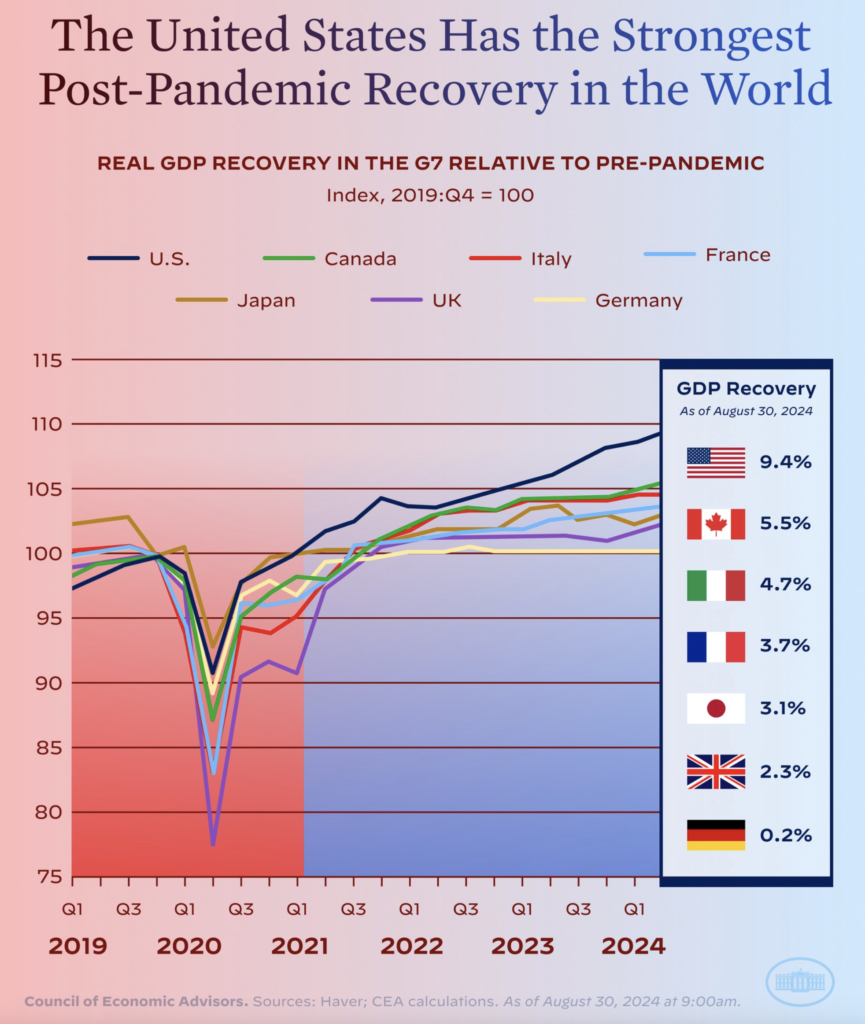
This was rarely reported on television news, and when it was, it was usually followed by dedicating the bulk of the story to person-on-the-street or person-in-the-diner interviews making the “but many are still hurting” point.
To be clear, even in an extremely strong economy like this one, there are always going to be people who are still hurting. But the television coverage in particular stressed the “but some are still hurting” point, much more than the “best economy in the developed world” point. The balance was way off.
Oh and by the way, many of the vaunted People-On-The-Street were upset because the rate inflation has only fallen to 2.2 percent, roughly the Federal Reserve Bank Board’s desired level. That wasn’t enough for them. They demanded that prices to return to pre-pandemic levels.
That kind of disinflation almost never happens. If it did happen, it would cause a recession that would put millions of Americans out of jobs. I also never saw that important context provided in news coverage.
TRUMP’S “ONLY TRUMP CAN FIX IT” CLAIM. Then there was the “only Trump can fix it” claim about the economy. The problem with that assertion is that the nation’s top Nobel prize-winning economists and Goldman Sachs market analysts looked at the Trump’s policies and say that Trump’s policies – mass deportations during a severe labor shortage and across-the-board tariffs — would make inflation and economic growth much worse than Harris’s policies, not better. Yahoo News:
“More than half of the living U.S. recipients of the Nobel Prize for economics signed a letter stating that a Harris agenda would be “vastly better for the U.S. economy” — here’s why.
The group of 23 Nobel Prize-winning economists outlined a number of reasons why they felt Harris would be better for the U.S. economy than Trump.
“While each of us has different views on the particulars of various economic policies, we believe that, overall, Harris’ economic agenda will improve our nation’s health, investment, sustainability, resilience, employment opportunities and fairness, and be vastly superior to the counterproductive economic agenda of Donald Trump,” the letter stated.
The economists who signed the letter expressed concerns about the effects of Trump’s proposed tariffs and tax cuts.
Finally, Trump’s alma matter, the University of Pennsylvania’s Wharton School of Business found that Trump’s policies would increase the deficit five times more than Harris’s proposals. So much for Republicans’ “America can’t afford Kamala” mantras.
These third-party expert rebuttals to Trump’s “only he can fix it” claims were almost never included in coverage of Trump’s claims. “Only Trump can fix it” claims got repeated endlessly in the mainstream news, while journalists almost always failed to report the truth that the nation’s leading experts actually say Trump will make the economy much worse.
Once again, the horserace implications of Trump’s claims were the focus of most of the reporting, not the accuracy of Trump’s central campaign claims.
The Harris campaign couldn’t have done a better job of making these three points. In their defense, they probably didn’t largely because they preferred to try to change the topic to one that was more advantageous, such as their own economic agenda, abortion bans, health care policy, and Trump’s unfitness for office. That’s what candidates have to do. If they spend the whole campaign “on defense” fact-checking their opponent, because journalists won’t do their job, voters will never hear their affirmative case.
Regardless of what you think about Harris’s decision to forgo the constant fact-checking role, the fact remains this should be the role of national news outlets. Journalists with time and space constraints obviously can’t call out all of Trump’s constant stream of lies. But when it comes to what surveys consistently said were the top issues in the campaign, they could have and should have done much more to help voters understand the Trump lies that, according to surveys, voters were believing.




